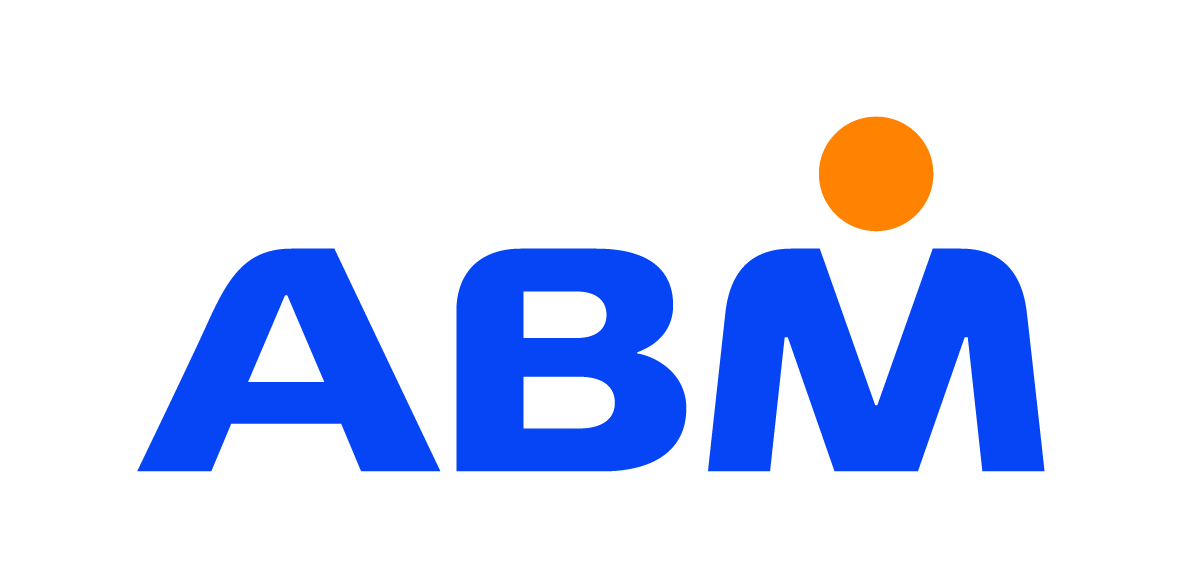Email marketing is one of the most effective direct marketing channels there is. With an average expected ROI of $32 for every $1 spent, it’s no surprise that 81% of small businesses rely on email as their primary customer acquisition channel, and 80% for retention. Or that 73% of marketers have no intention of adopting new channels such as influencer marketing, live video, chatbots, AI, or machine learning in 2019.
When it comes to receiving marketing emails, there’s evidence that customers like to be kept up to date. Statista found that 49% of consumers are happy to receive promotional emails from their favourite retail brands on a weekly basis. According to Hubspot, 59% of customers say marketing emails influence their purchase decisions, and 99% check their email every day.
While this might seem like a heavy workload for any marketing department, many companies are now using email automation – automatic email campaigns that trigger when a user performs a certain action or when set criteria are met. These emails triggers are completely automated, and informed by customer behaviour and data analysis.
Automated communications are, by nature, personalised, timely and relevant to the recipient.
As a result, open and click-through rates are much higher than for other, non-triggered messages, driving website traffic and revenue for the business.
According to marketing experts Apsis, 73% of leads are generated through email, and 80% of businesses increase their lead generation with marketing automation. This backs up earlier research from Autopilot which found that marketers using automation software were generating twice the number of leads as those using blast email software, and were perceived by their peers to be twice as effective at communicating.
Email automation is a proven way to convert leads into customers, to engage existing customers and to encourage greater brand loyalty, up-sells and additional purchases. When used alongside clear objectives, marketing automation tools have a significant impact on leads and conversions, and also on employee efficiency and use of resources. Integrated automation tools take the work out of email marketing, creating an automated workflow. The potential is enormous.
Trigger happy
Unlike one-off campaigns and newsletters that send to a whole list of customers and prospects, automated emails are sent to a particular individual when that person meets a trigger. The trigger action might be a sign-up, after which the user receives an automated ‘welcome’ email. Because these emails are triggered by customer behaviour and data, the purpose and extent of automated messages is only ever limited by your brand’s needs and your creativity.
How to Design an Effective Automated Email
Just like any other email marketing campaign, automated emails need to be optimised for conversion.
The subject line:
Even though the automated email is triggered by the recipient’s actions, it still needs to have a compelling subject line. Personalise this by including the recipient’s name in the subject heading.
Structure your email for skim-readers:
People don’t read emails in the same way they’d read a book. They scan the email, looking for things that spark their interest. Break your email into chunks and make sure your design and formatting serves up information in a digestible way.
Quality content:
There’s no better way to create desire towards the conversion action than by using compelling, benefit-focused copy.
Call-to-action buttons:
New data from Hubspot shows that personalised CTAs perform 202% better than default designs. Make sure to include buttons to increase click-through and to ease the path towards your desired conversion action, and embrace the customer desire for personalisation in every interactive aspect of your design.
Measure your results:
Email marketing tools like Rezcomm’s CRM system give the user comprehensive data on email-related metrics such as opens and clicks. To truly optimise the results of your automated campaigns, you need to also look at the fundamental numbers that matter to your business: Site visits, revenue and customer numbers and retention.
Some more tips…
Improving sales
- Send out automated emails up-selling products or services. Once a customer has already committed to purchase, send follow-up emails cross-selling items that will compliment the initial product.
- When you run special offers, automate emails offering vouchers and other discount information.
- Build your customer list from scratch. This will make it easier in the long-term to reach the demographic you’re trying to reach.
- Replenish your customer list frequently to prevent database decay, and clean your CRM database regularly to prevent duplicates on imported lists.
- Make sure automated emails feel ‘human’. There’s nothing worse than a robotic, insincere email.
- Monitor peak times when subscribers engage with your brand and schedule automated post to send during these times.
- Develop a content strategy that produces regular, quality content for your readers while gently promoting your services and expertise.
Onboarding and retention
- Use the information that you give to new clients and put it into an automated ‘welcome’ email.
- Show your gratitude to loyal customers by automating a simple ‘thank you’ email every so often.
- Set up a customer referral program, offering a reward to any customer who refers another person who then signs up to use your services.
- Monthly newsletters filled with useful content and information will strengthen your customer base, but don’t overdo it. The biggest reason people give for unsubscribing from mailing lists is “too many emails”.
- Offer different content across social media platforms. Don’t auto-publish the same content everywhere, it’s boring. Design content to fit the purpose and functionality of each platform.
- Be consistent. If you send an automated message promising a new product or service, or a special offer, it’s vital to deliver on that promise or you will lose customer trust.
- Use data such as name and purchase history from the customer’s CRM and social media profile to better understand customer needs.
- Make sure to refresh regular emails such as ‘repeat purchase’ triggers. Long-term customers will soon begin to recognise the same old content and become less engaged.
Engage Past Clients
- Don’t ignore past clients. Send them occasional automated emails so they can come back on board easily if they want to use your services again. These can include newsletters to keep them up to date with what your business is up to now.
- Send simple ‘thank you’ emails to former clients who have helped you reach milestones in your business.
Nurture Prospects
- Send ‘welcome’ emails to prospects immediately after you have captured their information.
- Verify email addresses before you upload all your contacts into the automation software. Getting rid of incorrect or invalid information before you start will reduce the bounce rate of your campaign.
- Prepare emails with an understanding of your audience. This goes for timing, triggers, content, design, in fact, every aspect of the email is informed by who will receive it and how you want them to respond.
- Personalise emails by using the recipient’s name in the subject heading.
- Determine which potential customers are close to converting with prospect activity alerts. This will help you avoid pestering people who aren’t ready to convert and to give support to those who are.
Email automation is a fantastic tool. Let your marketing strategy drive how you use the software, and make sure you understand how the technology works before you use it. Test, test and test again, and never, ever automate troubleshooting.
Rezcomm’s world’s first combined platform for airport sales, marketing and customer-centric analytics makes it incredibly easy to set up automated email campaigns that will drive revenue for your business well into the future. If you would like to speak to Rezcomm about how we can help, contact us today.
Developing sophisticated customer relationships
While email-marketing campaigns form the basis for positive relationships and interactions with customers, easing the processes of customer acquisition, satisfaction and retention, the changing consumer landscape means that customers no longer follow a straightforward buying journey. Purchases take on a fluid and sometimes erratic pattern, with shoppers interacting at different points and on different devices during the engagement-to-purchase path.
Influencing the customer journey with automation
Advances in email automation make it possible to influence this journey. By identifying the points at which a customer or potential customer might interact with your brand online through content, buyers can be guided and business goals achieved.
Successful marketing campaigns require a holistic understanding of customer behaviour. Meaningful, engaging personalisation requires a complete knowledge of how customers and prospects interact with the brand at every touchpoint (a touchpoint is any instance when a customer or potential customer interacts with your organisation or product), and across channels.
It’s worth noting that targeted campaigns yield a much higher ROI. In comparing segmented with non-segmented campaigns, Omnisend found that segmented campaigns not only provided a 34.7% higher open rate, they also resulted in 26.5% more conversions than non-segmented campaigns.
This is where customer journey mapping, a graphic portrayal of the customer’s experiences with your organisation across major and minor touchpoints, comes into play.
What is Customer Journey Mapping?
The journey map is an important tool designed to help businesses better understand what their customers want. Journey maps serve to codify and share relevant information across an organisation in easy-to-understand formats. This helps businesses to identify and prioritise specific initiatives that then inform the planning, design and delivery of the email experience received by the customer.
The statistics are compelling. According to Aberdeen Group research, thorough mapping of customer journeys drives both top and bottom-line value in measurable ways. ROI is significant, with 200% greater employee engagement recorded, and 350% more revenue from customer referrals.
In 2017, the gap between Customer Experience (CX) leaders and those companies that did not place the customer at the centre of their business plan widened. Customer experience is a powerful strategy. CX leaders know their customers, and they accomplish this understanding by leveraging tools such as customer segmentation and journey mapping.
Begin Your Journey Map
- Start by drawing a map of the journey your customer takes with your brand, from first contact to conversion and beyond. Include every possible touchpoint the customer may use to interact with your brand. If you don’t know where to begin, consult the experts. Rezcomm partners with airports worldwide and has data pertaining to a quarter of a billion passengers, informing a strong knowledge of the airport customer journey.
- Today’s customer is omnichannel, interacting with brands and products through up to five different devices (smartphones, desktops, smart watches, tablets, fitness trackers). The customer journey may begin through any one of these devices. To develop the best, most highly personalised and responsive email campaigns, it is necessary to ensure that the recipient receives the right message whenever and wherever the email is opened.
- Every department in your organisation should be engaged with satisfying the conscious and subconscious needs of your brand’s target audience, and with delivering the right message at the right time, on the right channel, to the right customer.
This is likely to involve departments that may not normally work together. Departments that previously focused on operational efficiency now need to consider customer needs too. Remember, even touchpoints relevant to a particular department, for example payment touchpoints, which are the domain of the finance department, play a significant role in shaping the customer perceptions of a company.
- Your CRM database already houses a huge amount of customer data, and there’s plenty of information available. Integrate online reviews, call-centre logs, returns, purchase histories, website analytics, and anything else you can find into your journey map.
- When you make your customer journey map, consider that each touchpoint could easily be the very first interaction that a new customer experiences with your brand. Analyse the impression the touchpoint is likely to make on the customer, and map the possible/likely emotional state of the customer at each stage in the journey. Ask a colleague to test out the sign-up, welcome, and marketing series processes and feed back on their impressions and experience.
- Create customer personas – semi-fictitious people – models that each represents a type of customer. Build several different personas based the stories and customer journeys of several of your existing customers. Include information such as name, age, geo-location, job, family, hobbies and interests, and how each customer feels about the value and quality of the products and services they buy from you.
- During the customer journey mapping, it’s likely you will come across points where the customer experience fails to match with desires or expectations. These ‘moment of truth’ points are valuable in showing areas where the process can be improved.
- Creating the journey map is a chance to learn about the customer journey and look for areas that can be improved. Create a list of recommendations based on the map. Are there any steps your business could take to improve the customer journey? Does your brand meet its promises to your customers? Use the journey may as an opportunity to build an inventory that can be used to meet business goals.
Integrate the map into Email Automation
CRM and E-marketing software such as that offered by Rezcomm includes advanced segmentation and automation tools. The complete understanding of your customer journey gained from journey mapping can be integrated into the database, informing email-marketing campaigns.
Here are a few suggestions of automated campaigns that can be triggered and organised using data segmentation:
- Trigger-based transactional emails such as welcome emails, receipts and order confirmations have open rates of 50% or more. Use these to cross-sell and up-sell.
- Shopping-cart recovery emails can help recapture abandoned shopping baskets and make sales. According to Salecycle clicked remarketing emails average a 30% conversion rate compared to the overall average conversion rate of 5%.
- Track abandoned shopping carts and emails those customers offering reminders or incentives for them to return to the purchase.
- Customer-appreciation emails such as birthday and anniversary messages are an important form of personalisation.
- Your customer journey map should uncover plenty of ideas for re-engagement of subscribers who have lost interest or contact with the business. Re-engagement emails can be used to bring these customers back.
Once you have mapped your customer journey, the steps that will align your company goals with customers’ expectations become clear. This represents a big shift towards customer-focus that is driving CX leaders, and will give clear targets and purpose to your email marketing campaigns, with a greater relevance and ROI to automated mail-outs and a satisfied customer base.
Rezcomm is the partner of choice for airports worldwide. The team is expert in supporting airport sales and marketing through smart, intuitive tech. If you have any questions about how you can use our integrated platform to harness the potential of automated email workflows, contact us for a chat.






























